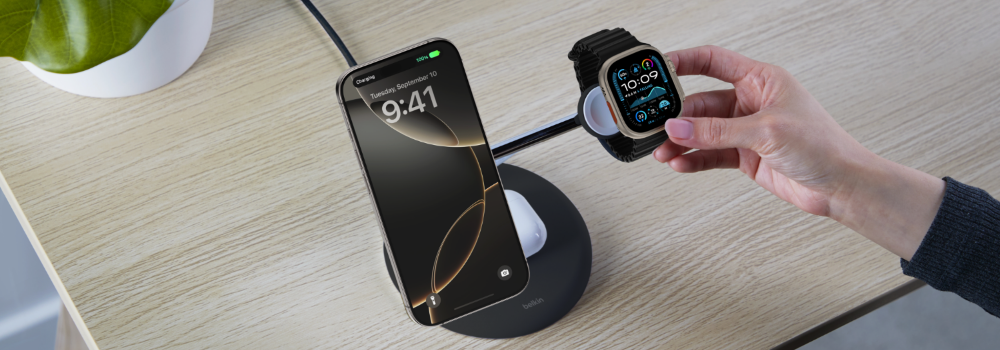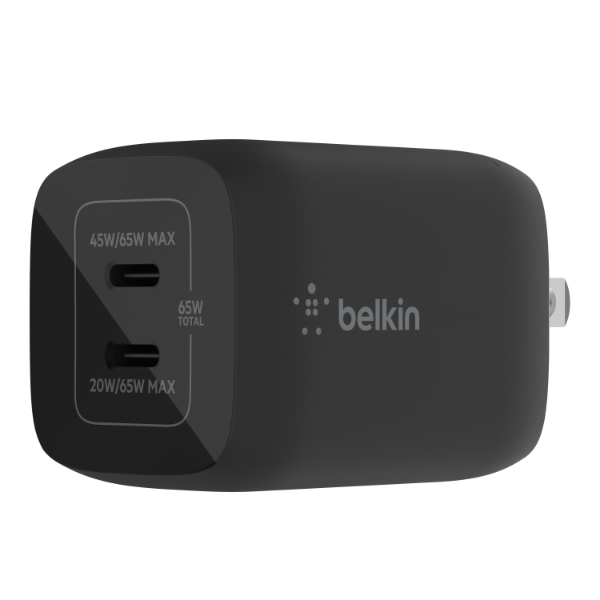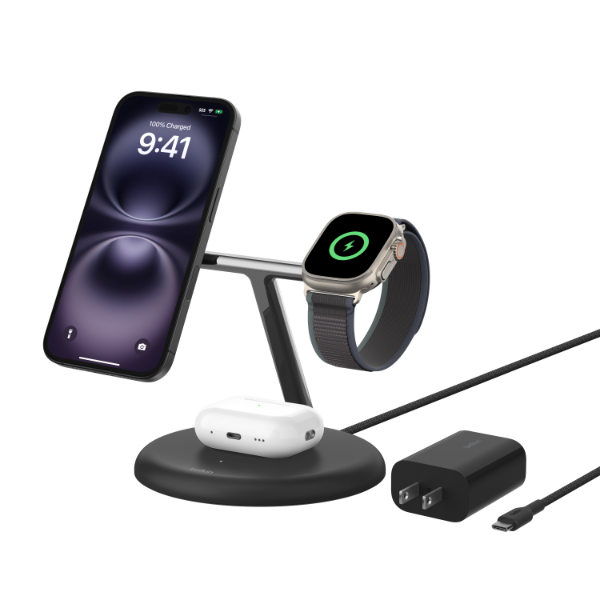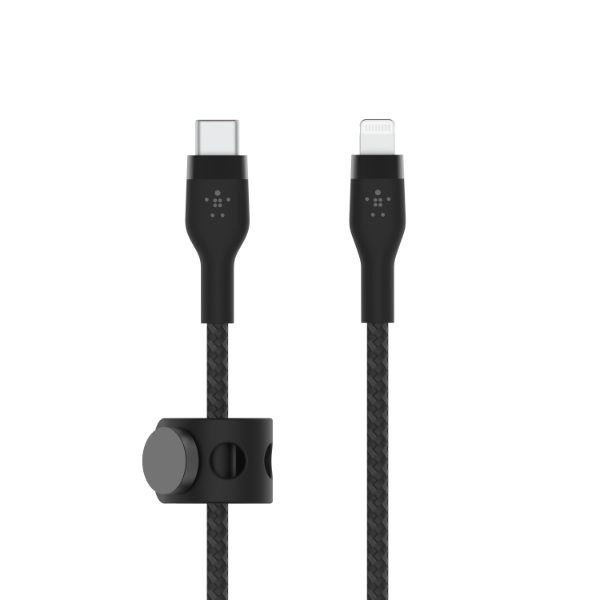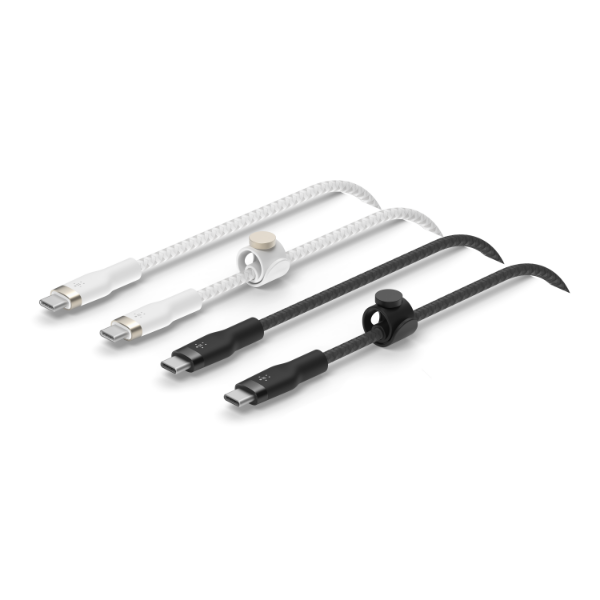Why Is My Phone Charging So Slowly?
7 Common Causes and How to Fix Them
June 9, 2025
Few things cause more low-key panic than watching your battery dip to 1% right as you need to leave the house. Whether it’s your iPhone or Samsung Galaxy, slow charging is more than an inconvenience—it interrupts your day, your plans, and your peace of mind.
Fortunately, most slow charging issues are preventable or fixable. In this guide, we’ll break down the most common reasons your phone might be charging slowly—and how to get back to full power, faster.
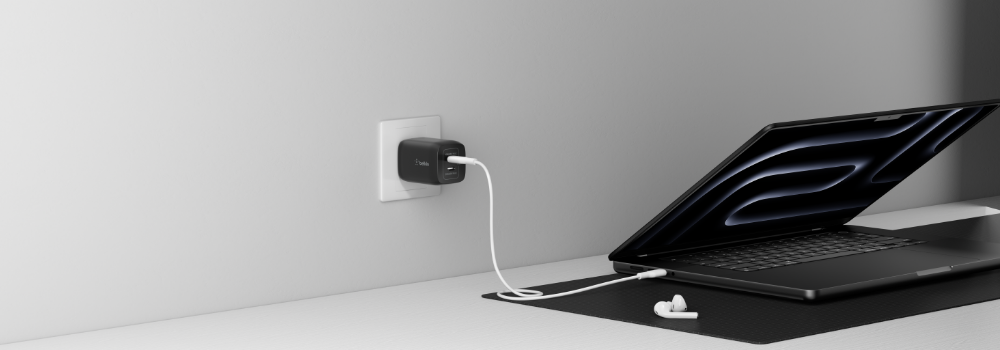
1. You're Using a Low-Power Charger
One of the most common culprits is the charger itself. Many users don’t realize their charging brick or wall adapter isn’t powerful enough to meet modern phone demands. Today’s smartphones support fast charging, but only when paired with a charger that can supply enough wattage. Older or generic adapters might only offer 5W to 10W, while fast charging typically starts at 18W and can go up to 45W or higher.
Fix: Check the wattage label on your adapter. If it doesn’t support USB-C Power Delivery (PD) or Programmable Power Supply (PPS), it may be time to upgrade. Match the charger to your phone’s specifications for best results.
2. Your Charging Cable Is Holding You Back
Cables can be deceptively simple, but not all are built for speed. Many budget or older cables aren't rated to carry fast-charging current, and damaged or frayed cables can reduce efficiency significantly. Even if your charger is capable, a cable that doesn’t support fast charging will act as a bottleneck.
Fix: Use a certified cable compatible with your charger and device. Look for USB-IF certification for USB-C cables, and MFi certification for Lightning cables. A high wattage rating—at least 60W for USB-C—is also important. Replace visibly worn cables as soon as possible.
3. You’re Multitasking While Charging
Using your phone while it’s charging—especially power-heavy activities like gaming, video calling, or GPS—can significantly slow down charging. In some cases, your phone may drain power as fast as it gains it.
Fix: Whenever possible, leave your phone idle while charging. Better yet:
- Enable Airplane Mode
- Turn on Battery Saver (Android) or Low Power Mode (iOS)
- Lock your screen to minimize background processes
4. Wireless Charging Isn’t Aligned Properly
Wireless charging offers convenience, but it’s highly dependent on proper alignment. If your phone isn't positioned correctly on the pad or stand, charging speed drops—or may stop altogether. This is especially common with older pads or thick cases that interfere with coil alignment.
Fix: Use a wireless charger with magnetic alignment if supported, like MagSafe for iPhones. Make sure your phone is flush with the charging surface and remove thick cases if necessary. Be aware that wireless charging is inherently slower than wired, so it’s best for casual top-ups rather than fast fills.
5. Your Power Source Is Weak
Charging from a laptop USB port, a public hub, or an underpowered power strip often results in minimal current delivery—far below what your phone requires for fast charging.
Fix: Plug into a wall outlet using a dedicated high-speed charger. Avoid charging through laptops, low-voltage car outlets, or public USB ports when possible. They’re not only slower, but also less secure.
6. There’s Debris in Your Charging Port
Over time, dust and lint can accumulate in your phone’s charging port, blocking proper contact between the cable and internal connectors. This can lead to inconsistent, slow, or failed charging attempts.
Fix: Inspect the port with a flashlight. Use a wooden or plastic toothpick—or a short burst of compressed air—to gently remove debris. Avoid using metal tools, which can damage internal pins. If cleaning doesn’t help, consult a technician.
7. Your Settings or Battery May Be to Blame
Some phones limit charging speed to preserve battery health, particularly overnight. Others may have batteries that are degraded from age and frequent charging cycles.
Fix: Review your device’s battery settings for features like Optimized Battery Charging (iOS) or Adaptive Charging (Android). If your battery health is declining, consider replacing the battery or visiting a technician for diagnostics.
Bonus Tips for Faster Charging
- Avoid charging in hot environments—heat slows charging and degrades battery health.
- Don’t use thick or unventilated cases while charging.
- Invest in high-quality, certified accessories for optimal speed and safety.
- Charge when your battery is above 20% and below 80% to minimize stress on lithium-ion cells.
Choosing the Right Accessories Makes All the Difference
Understanding the reasons behind slow charging is only part of the equation—the other is knowing which accessories to trust. The charging speed your phone can achieve depends heavily on the quality, certification, and compatibility of the gear you use.
That means not just any cable or wall charger will do.
For optimal performance and safety, look for:
- MFi (Made for iPhone) certification for Apple devices
- USB-IF certification for USB-C accessories
- PPS (Programmable Power Supply) support for fast-charging Android phones
- Rigorous testing for surge protection, heat resistance, and long-term durability
Accessories from established manufacturers who invest in engineering, compliance, and device-specific tuning are far more likely to deliver consistent, safe charging.
Belkin, a global leader in consumer electronics for over four decades, meets all these criteria. Known for its innovation and device compatibility, Belkin offers high-performance chargers, cables, wireless pads, and accessories that align with the latest charging standards from Apple, Samsung, and Google.
Belkin Charging Solutions to Explore:
If you're looking for trusted accessories that work seamlessly with your phone and won't slow you down, here are a few Belkin options worth considering:
A slow-charging phone isn’t just inconvenient—it’s a signal that something in your charging setup may be underperforming. By identifying the issue and choosing the right accessories, you can save time, reduce battery wear, and restore confidence in your device. Whether you upgrade your cable, switch to a better charger, or adopt wireless charging with precision alignment, these small changes can have a big impact. And when you're ready to invest in high-quality accessories built for performance and protection, trusted brands like Belkin are ready to power your next charge—without the slowdown.
We hope you enjoyed this post!
Explore more on the Belkin Blog,
or sign up for email and text alerts: get the latest blog updates, product announcements, and exclusive deals delivered right to you.
